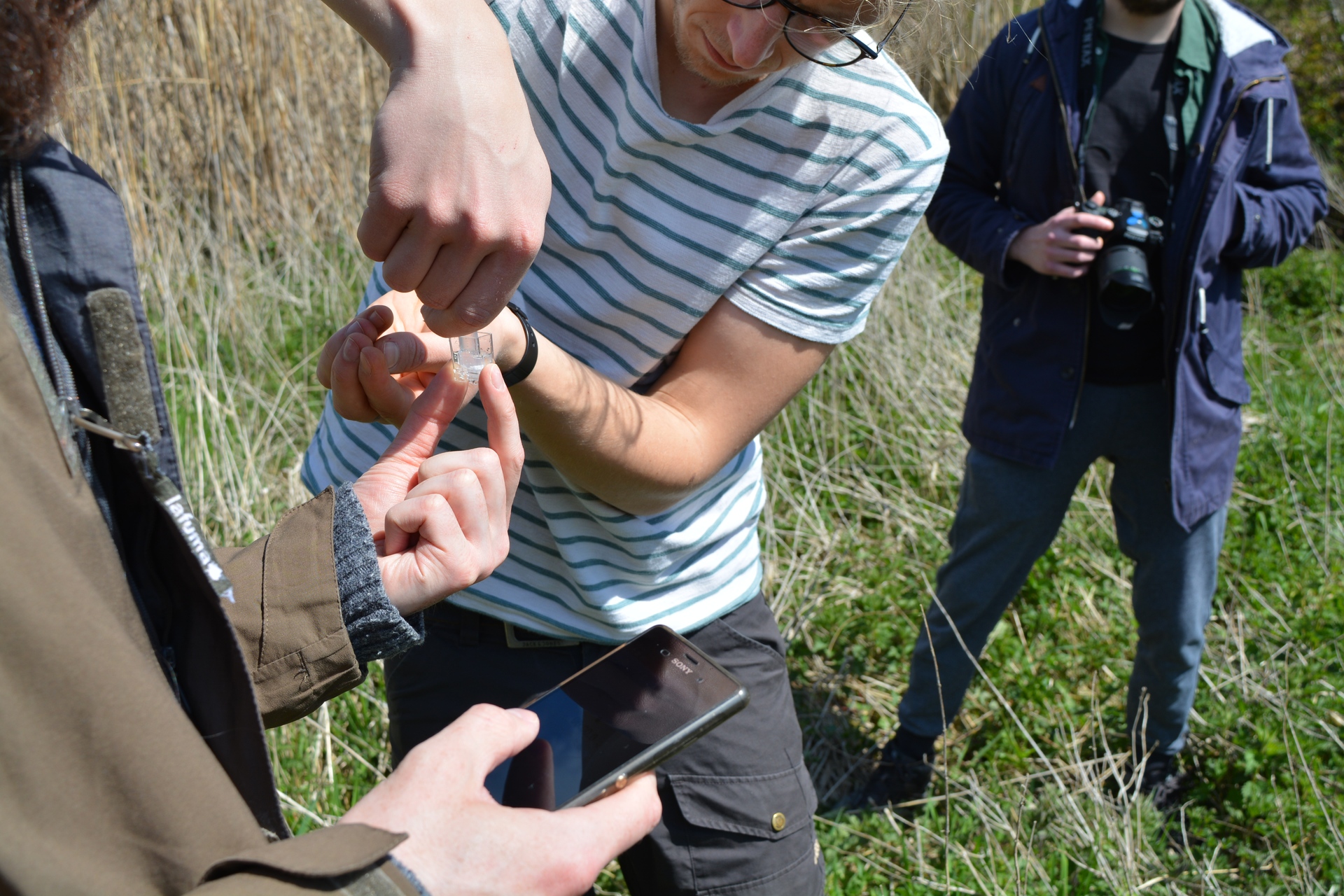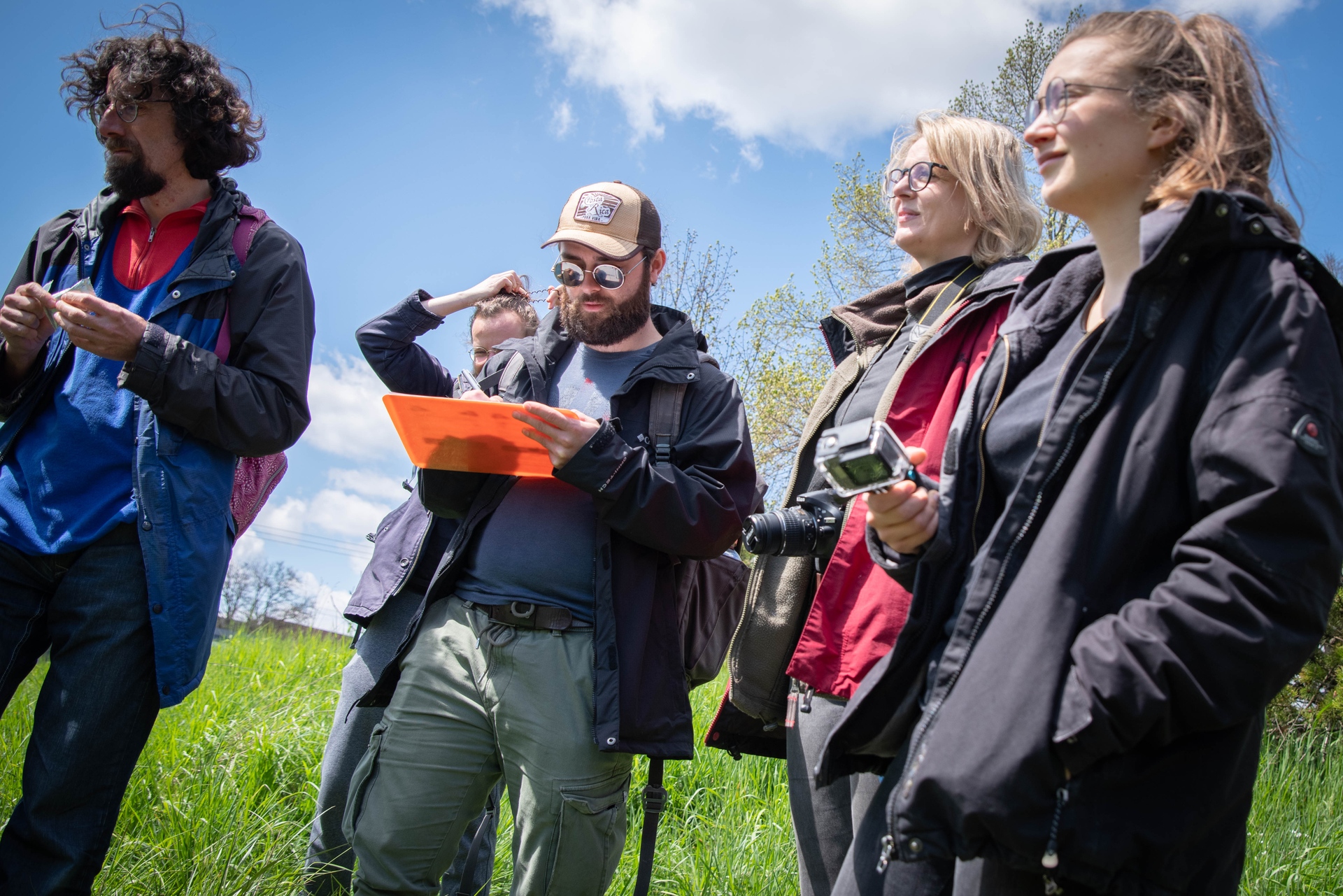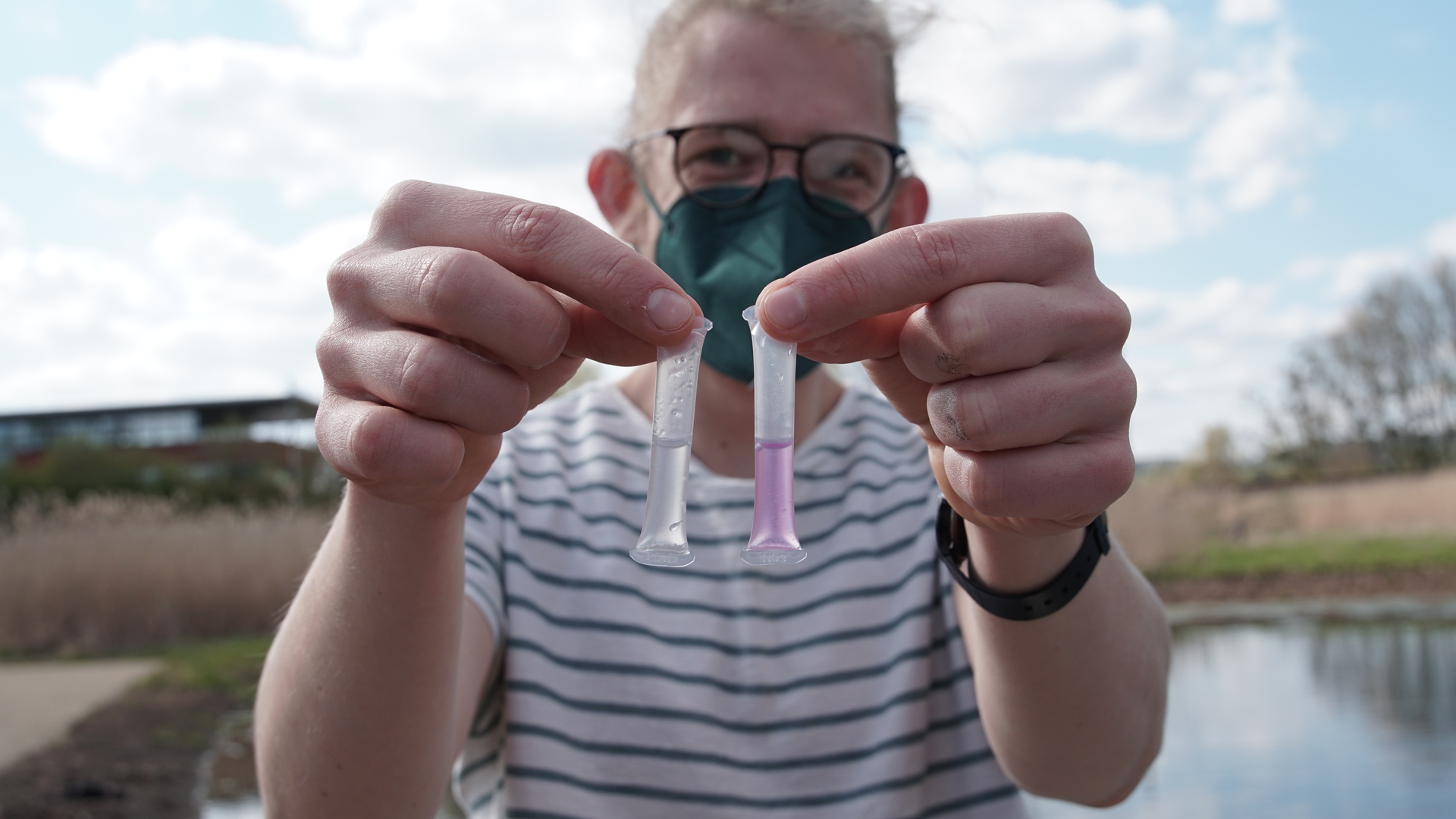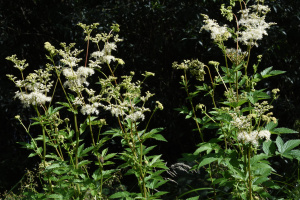Vijaya Ramanujam
Butterbur (Petasites hybridus)
Where?
Butterbur requires seepage-wet or partially flooded, nutrient-rich soils and therefore often grows along stream and river banks.
Appearance?
Butterbur is a perennial herbaceous plant that reaches growth heights between 10 and 40 cm, and up to 120 cm at fruiting time. It grows from a brownish rhizome about 4 cm thick. The leaf stalk growing from it is hollow inside and shows distinct ridges and can reach diameters of up to 60 cm, growing only after the flowering period. The flowers grow on a separate, reddish stem, appear between March and May and grow as a densely standing reddish-white to red-purple inflorescence.
Special features?
The plant was and is used as a medicinal plant after controlled processing, but is toxic to humans in its natural state.
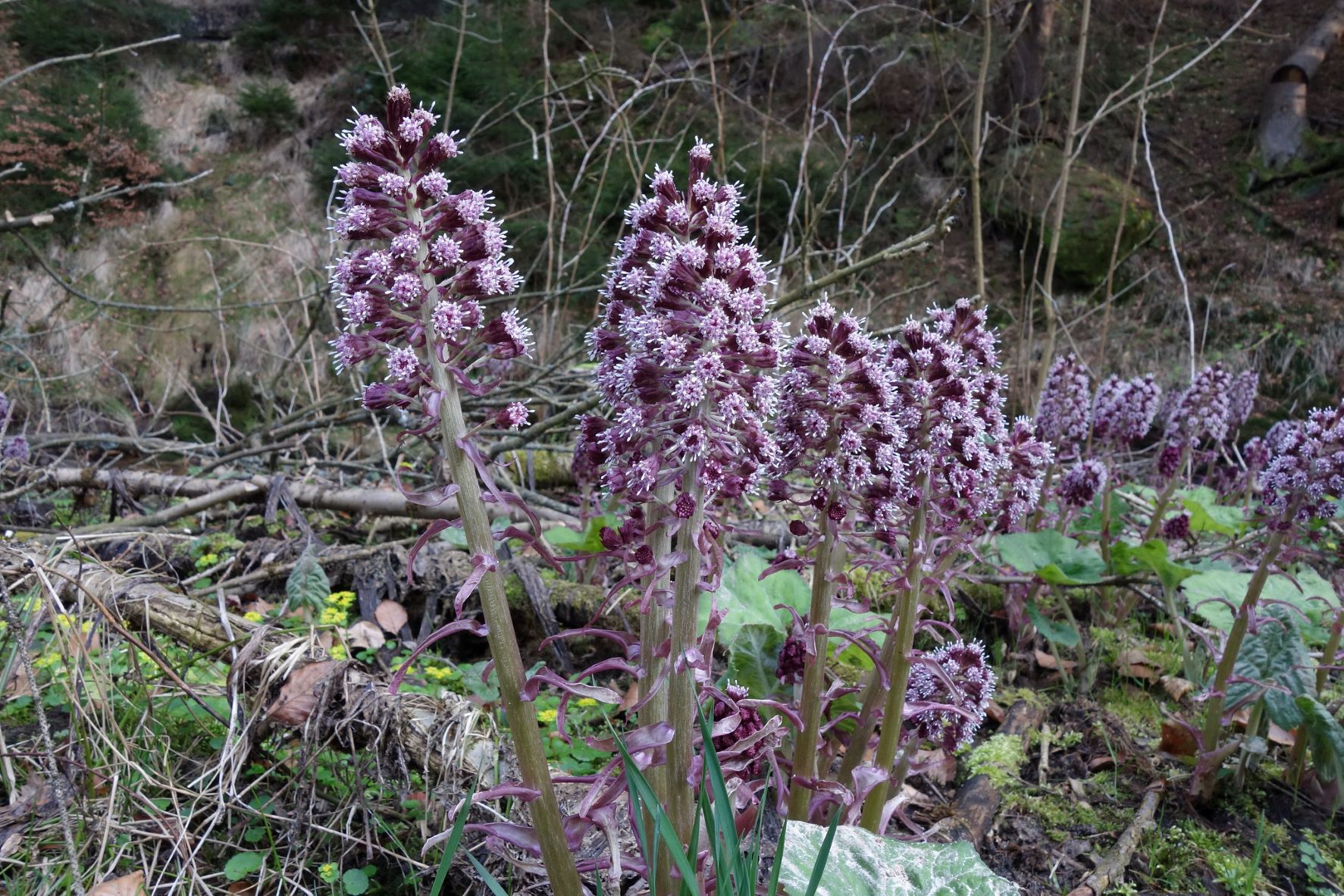
"Petasites hybridus - butterbur - Gewöhnliche Pestwurz" by Nichlas Turland is licensed under CC BY-NC-ND 2.0
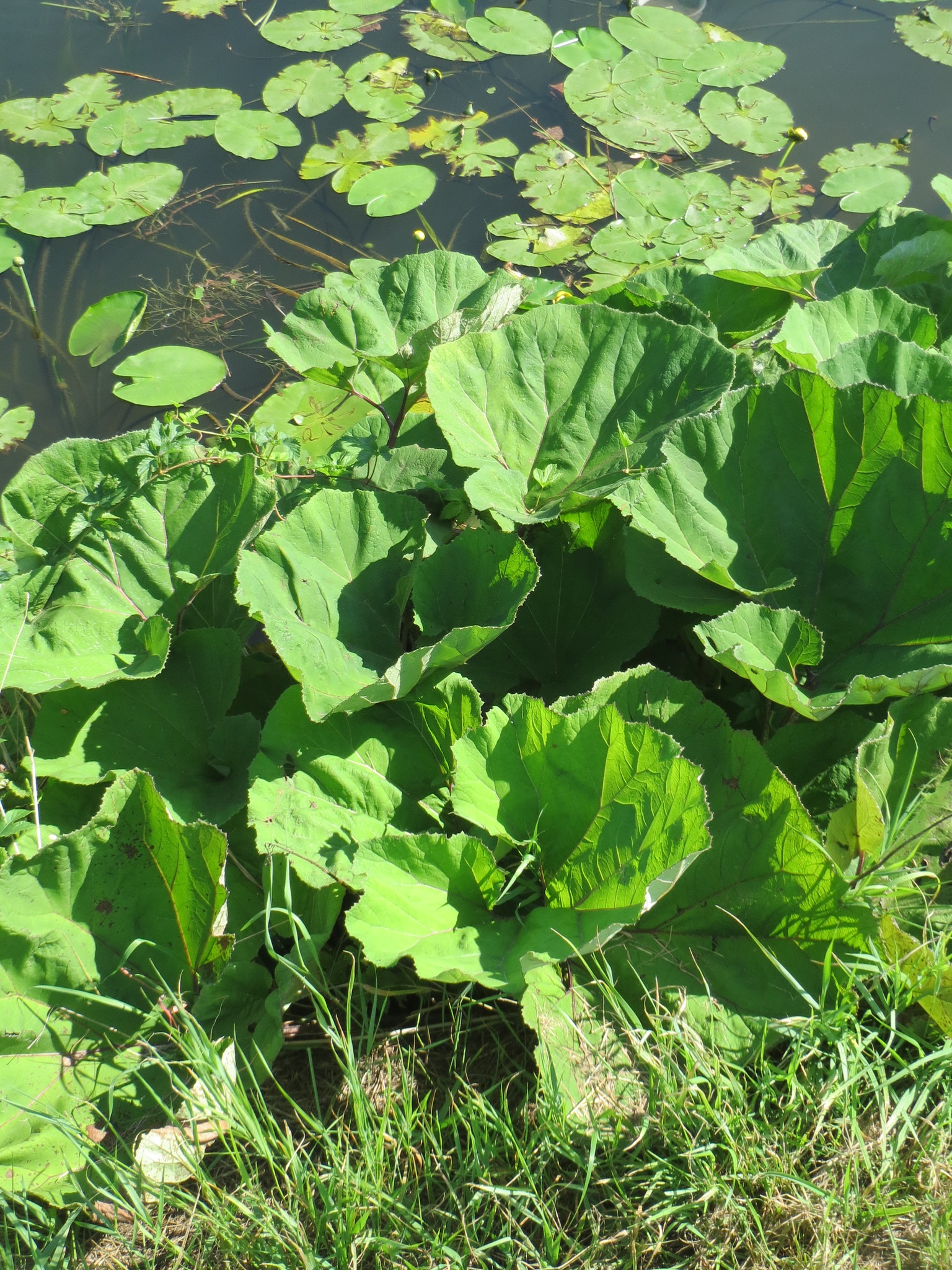
"Petasites hybridus" by Andreas Rockstein is licensed under CC BY-SA 2.0
River water-crowfoot (Ranunculus fluitans)
Where?
River water-crowfoot grows in fast-flowing rivers and streams in moderately warm to warm areas.
Appearance?
River water-crowfoot is a wintergreen, herbaceous plant that forms stems up to 6 meters long. On it grow at least 8 cm long, thread-like and multi-branched submerged leaves. Between June and August form white flowers with yellow stamens that have a diameter of up to 2 cm.
Special features?
Underwater, egg-shaped stipules are formed, above water, small fruits are formed, which contain between 34 and 63 nutlets.
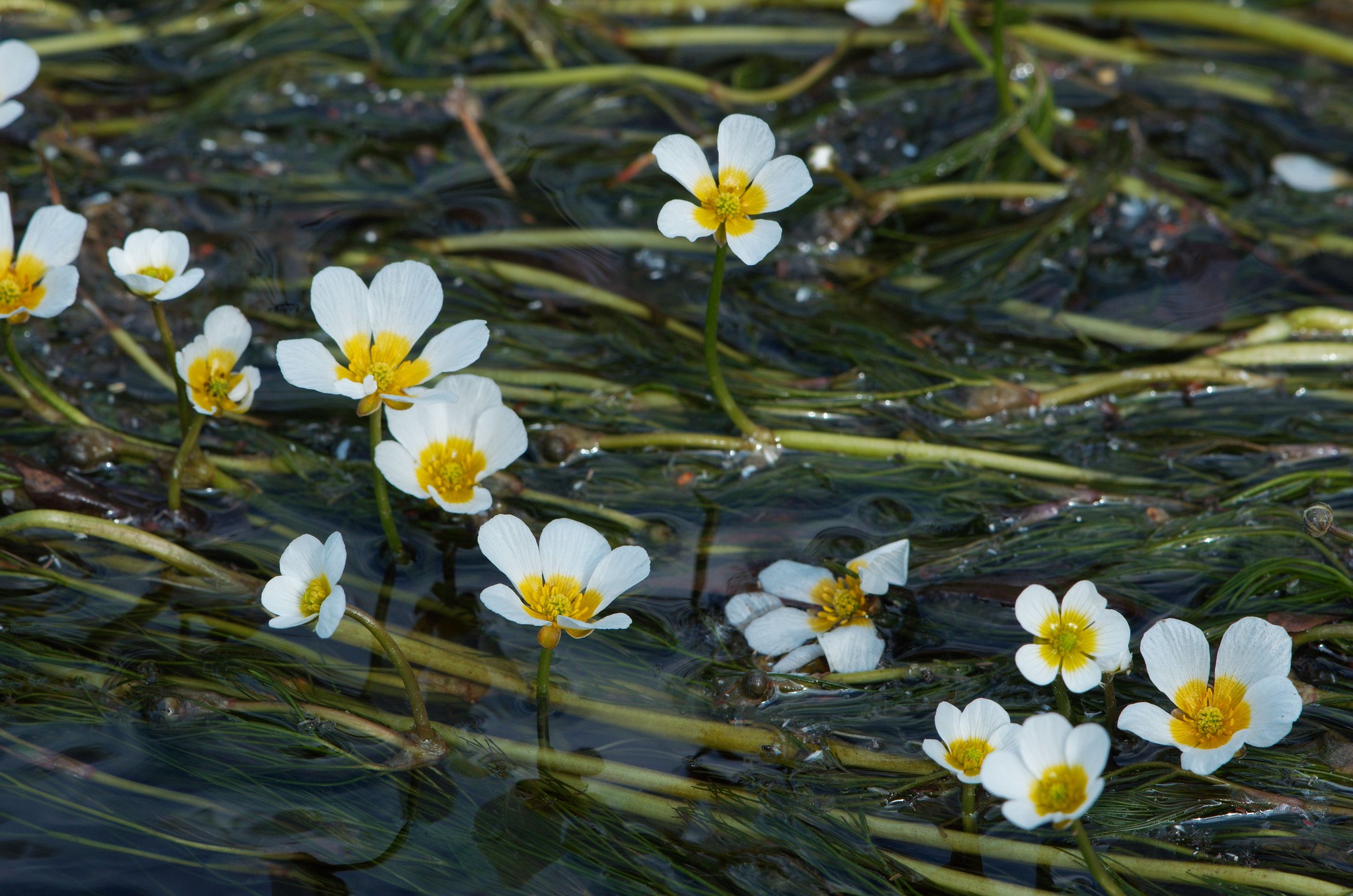
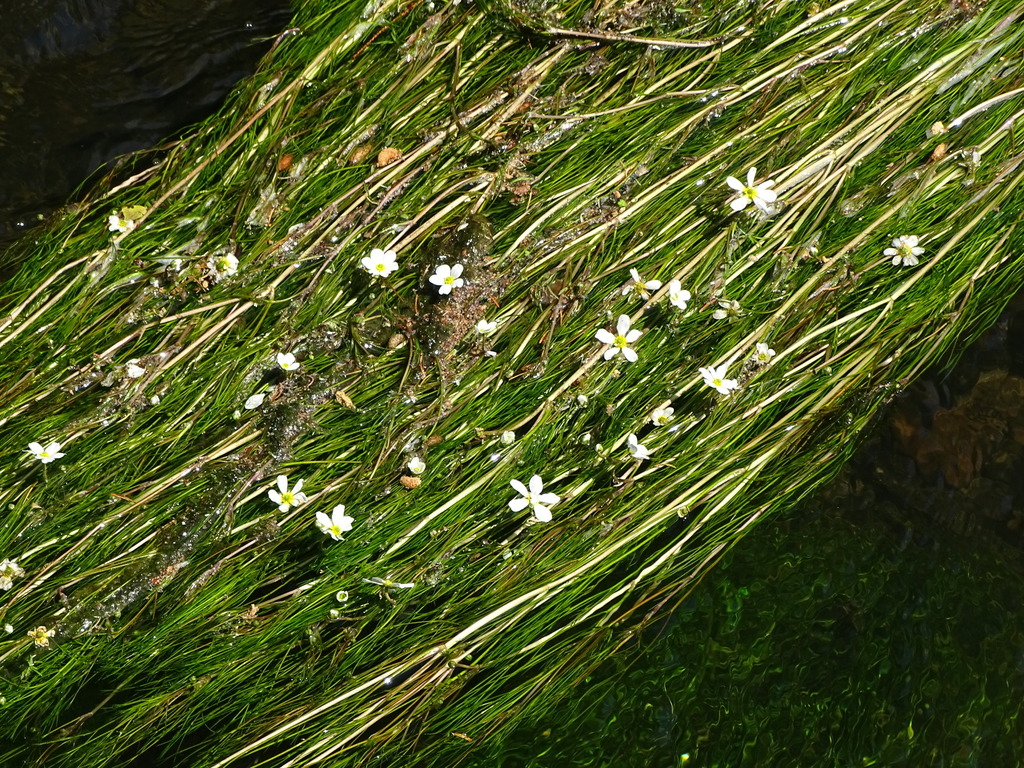
"Flutender Hahnenfuß" by Grzegorz Grzejszczak is licensed under CC BY-SA 4.0
Bogbean (Menyanthes trifoliata)
Where?
Bogbean (Menyanthes trifoliata) grows in shallow water and spring swamps of rivers, in fen forests, intermountain fens, and on edges of upland bogs.
Appearance?
Bogbean is a perennial, herbaceous plant that grows up to 30 cm tall and forms rhizomes up to finger-thick, from which 12 to 20 cm long leaf stalks grow, each with three elliptical, smooth leaves. From April to June, inflorescences form on the leaf axils on up to 30 cm long, leafless shafts, with, per flower, five pink to pure white sepals.
Special Features?
Bogbean has been used as a remedy and is said to help with digestive problems. However, the originally assumed fever-reducing effect cannot be proven. They can cause headaches, vomiting and diarrhea.
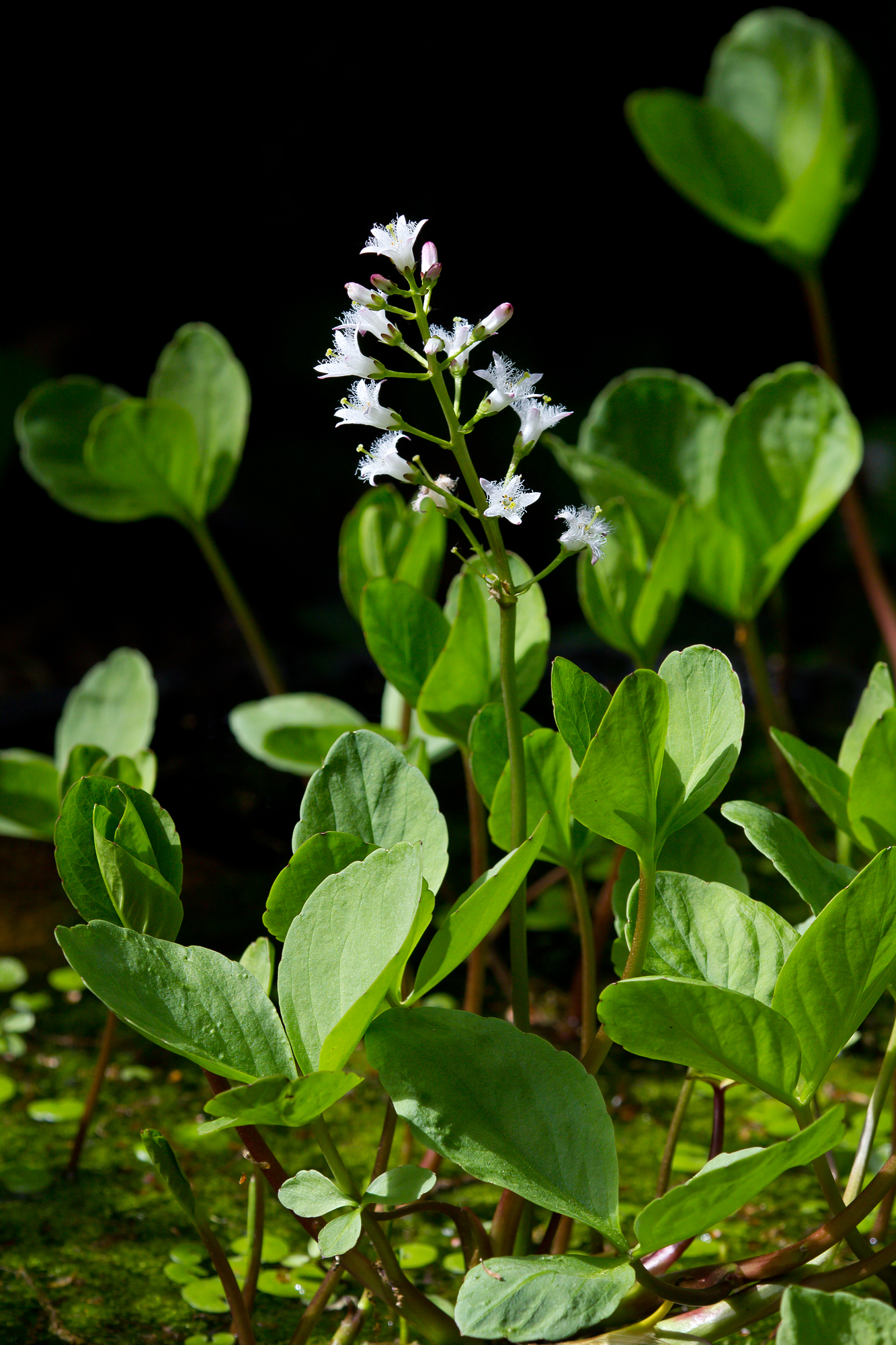
"MenyanthesTrifoliata6" by Christian Fischer is licensed under CC BY-SA 3.0
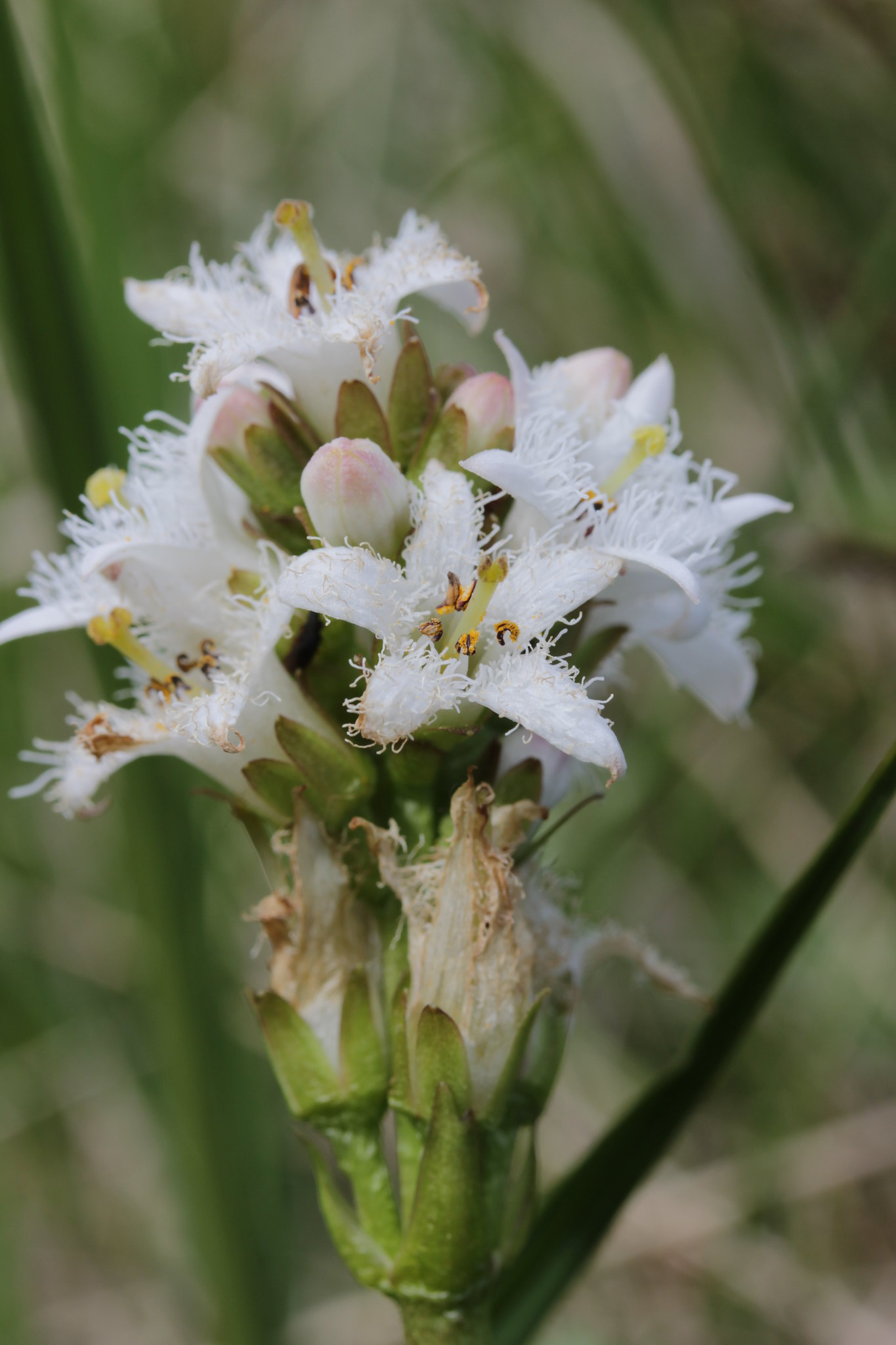
Mead wort (Filipendula ulmaria)
Where?
Mead wort grows in much of Europe on moist to wet soils, with nutrient-rich and weakly to moderately acidic soils. It is a light to semi-shade plant and is usually found in ditches, watercourse margins and wet meadows.
Aussehen?
Mead wort is a perennial, herbaceous plant that reaches growth heights of 50 to 150 centimeters. The stems are reddish in color and branch only above, below the inflorescences. The leaves are dark green and have a white down on the underside. The inflorescences bloom from June to August and consist of many small cream to yellowish white flowers that develop into slightly twisted nutlets after the flowering phase. The flowers give off an intense honey to almond-like odor.
Special features?
In almost all of Europe the mead wort is native, in North America it is an undesirable neophyte. In both Europe and America, it is considered an undesirable pasture herb that is avoided by grazing animals, so it is controlled in many places. It is used in many places to flavor foods and beverages because of its smell and taste. It has also been used in part as a fragrant plant and in herbal medicine
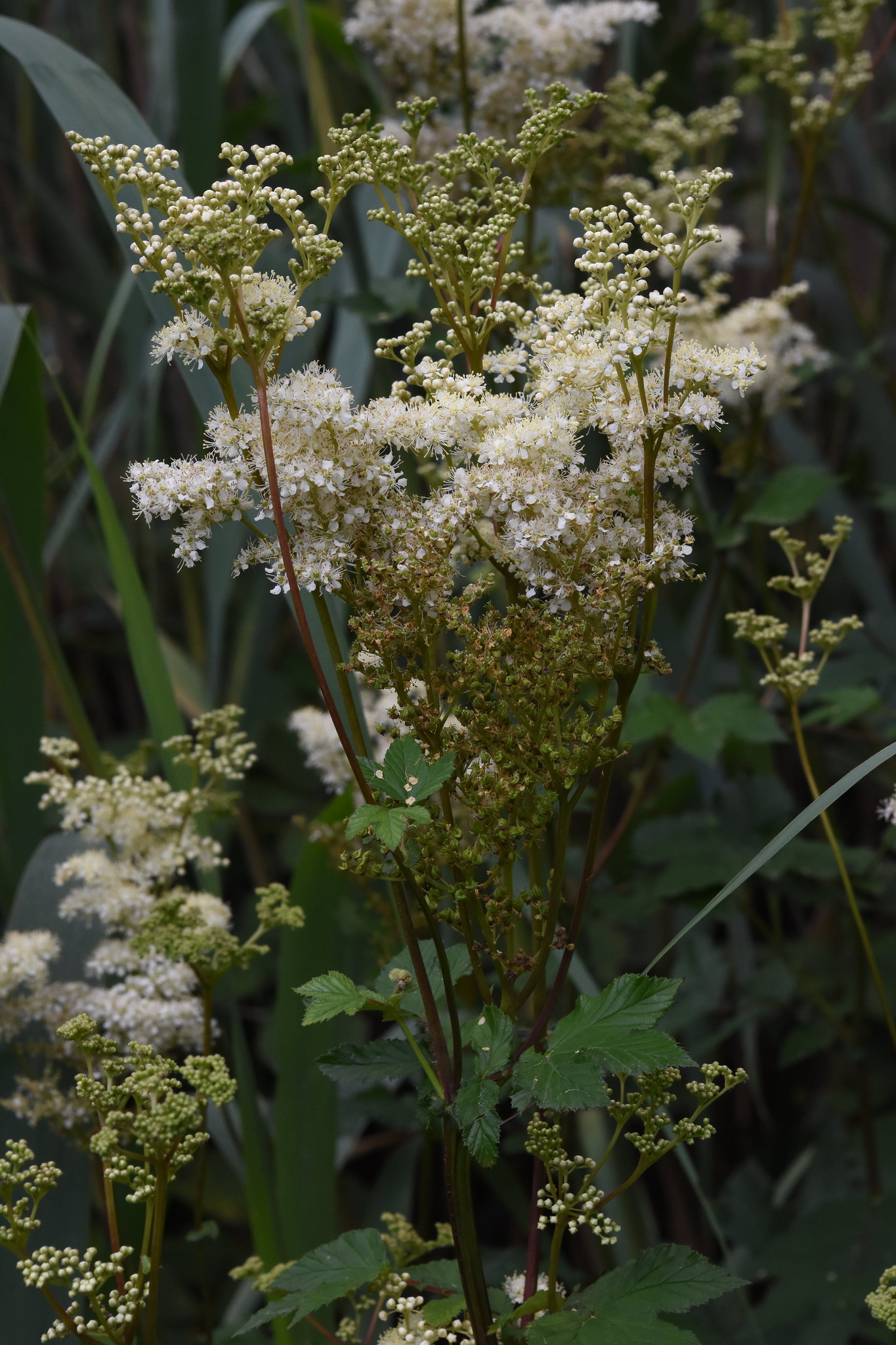
"Filipendula ulmaria – meadowsweed – Echtes Mädesüß" by Nichlas Turland is licensed under CC BY-NC-ND 2.0
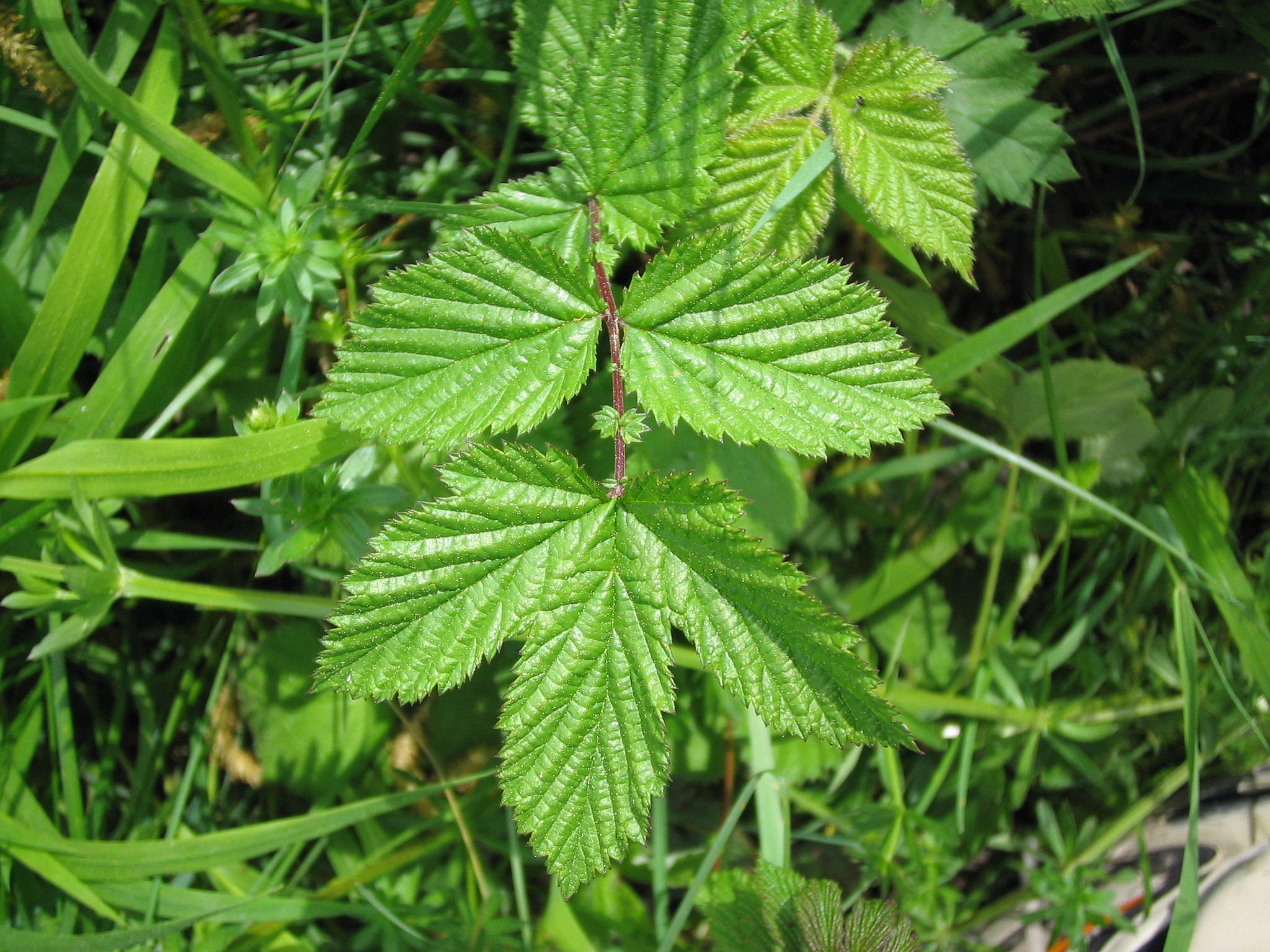
"Filipendula ulmaria" by Michael Wunderli is licensed under CC BY 2.0
Nettle (Urtica)
Where?
Stinging nettles are a typical indicator plant for nitrogen-rich soils, whose growth and spread is promoted in particular by nitrogen input. Four species of stinging nettle occur in Central Europe, which grow very undemandingly and therefore colonize a wide range of habitats.The most common species is Urtica dioica.
Appearance?
Nettles grow as an annual or perennial herbaceous plant with (depending on the species) growth heights between 10 and 300 cm. The often square stems are partly branched, partly unbranched and grow mostly upright or ascending. All green parts of the plant are covered with stinging and bristly hairs. The leaves are usually arranged cross-opposite, have an elliptical, ovoid or circular appearance and are usually toothed at the leaf edge..
Special features?
Typical of stinging nettles are the stinging hairs, which break off on contact and release stinging liquid into and onto the skin, causing (depending on the species) more or less painful wheals.
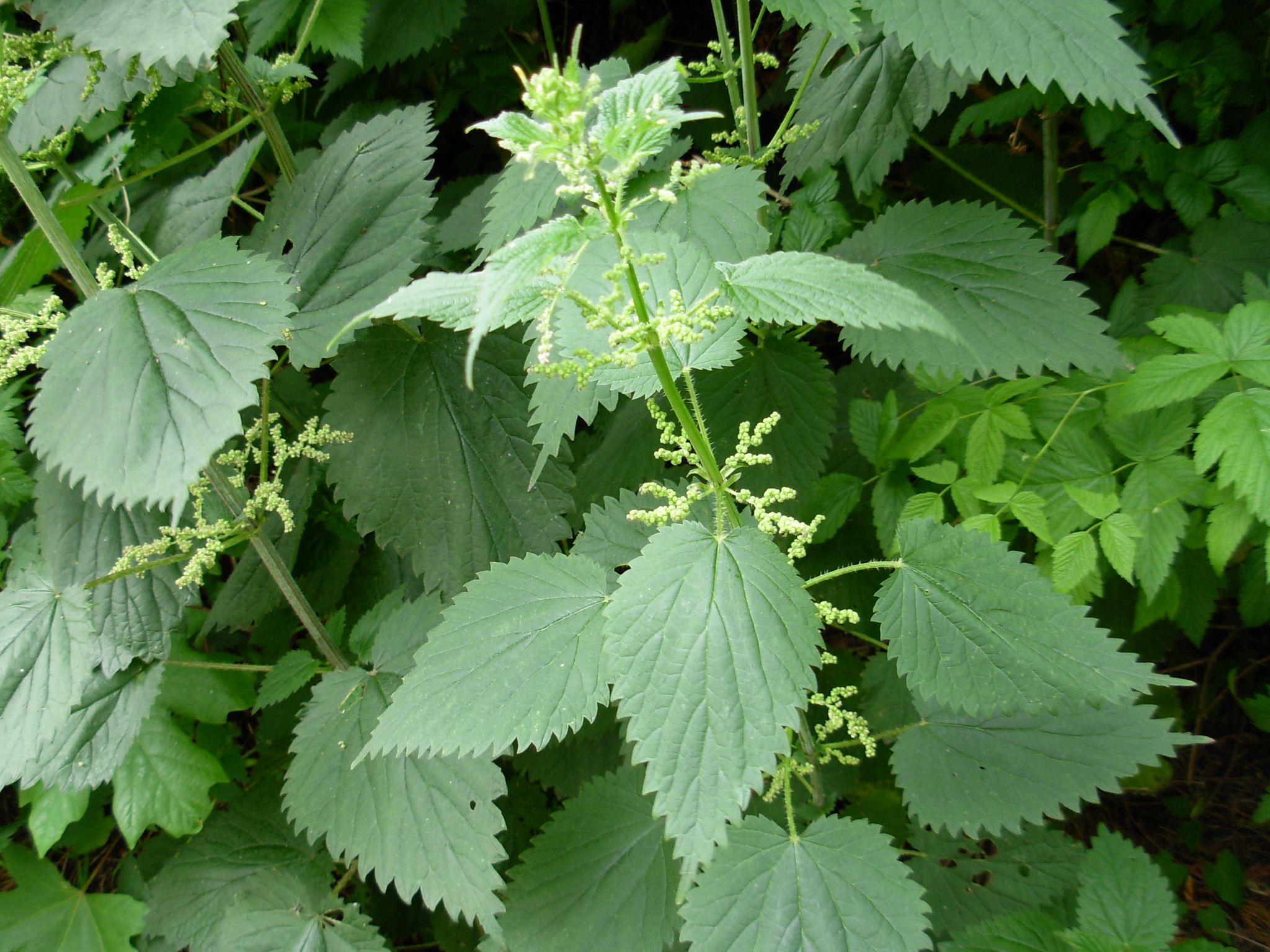
"Urtica dioica Stinging Nettle - Schmitz Park" by brebooks is licensed under CC BY-SA 2.0
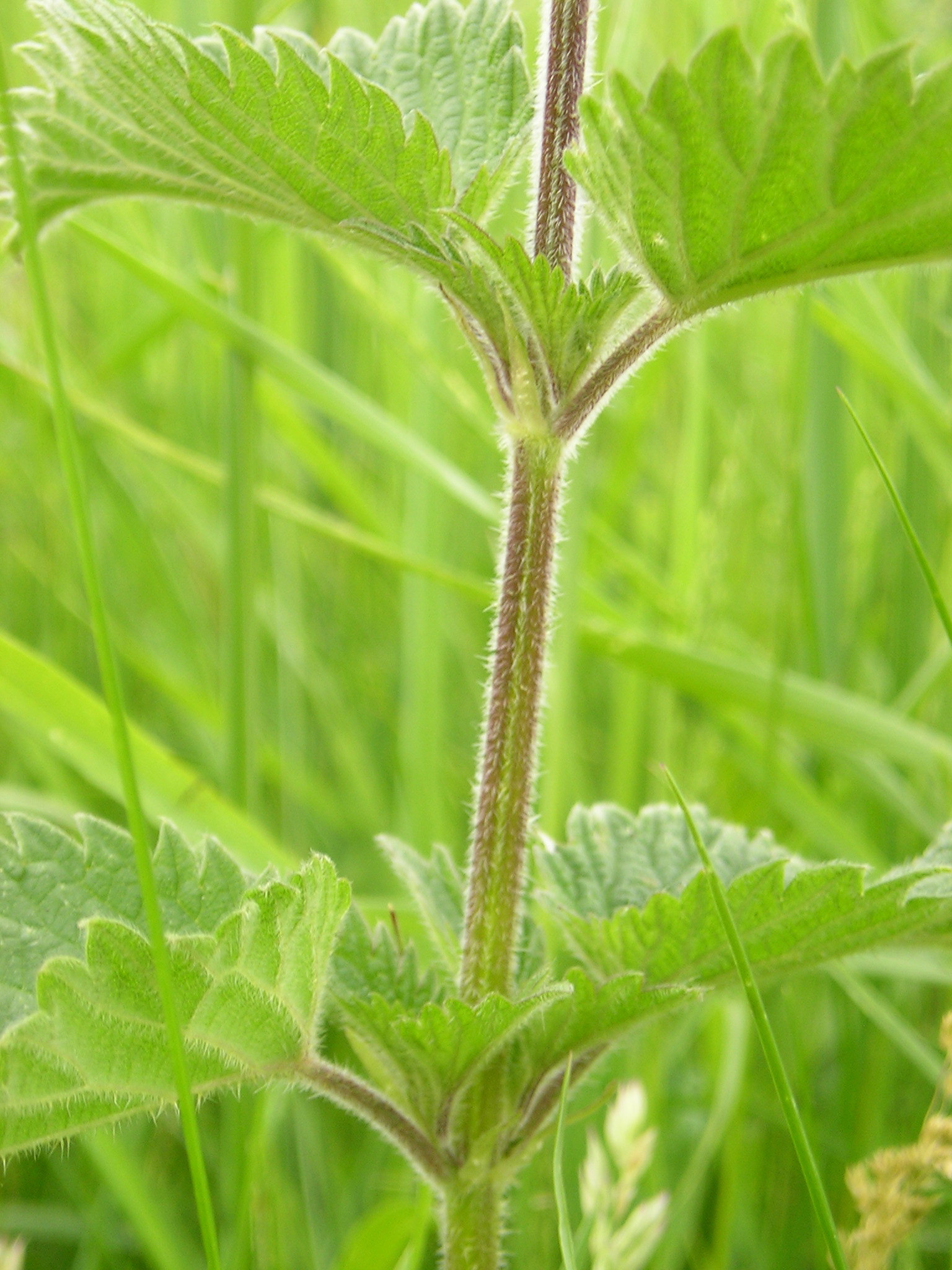
"Utrica diocia" by Anna is licenced under CC BY 2.0
Bog stitchwort (Stellaria alsine)
Where?
The Bog stitchwort (Stellaria alsine) typically grows on wet sites, along spring edges, forest roads and ditches on seepage-wet, more or less nutrient-rich soils in partial shade.
Appearance?
The brook chickweed is a perennial herbaceous plant that reaches growth heights or lengths of 10-40 cm. The leaves are directly on the stem or short stalked, elongated pointed and bluish green color. In the flowering period from May to July it forms small radiating white to light green flowers
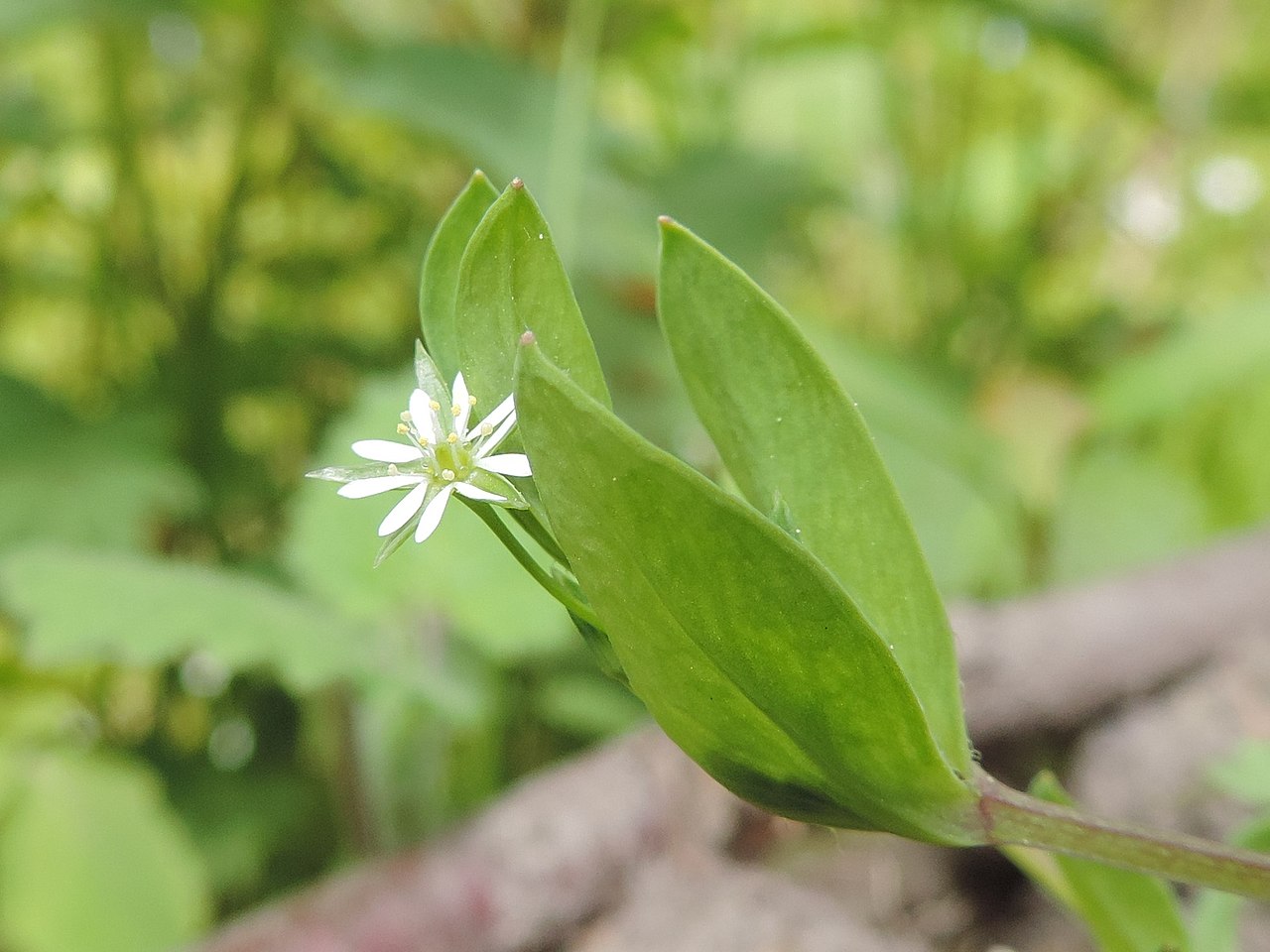
"Stellaria alsine kz12" is licensend under CC BY-SA 4.0
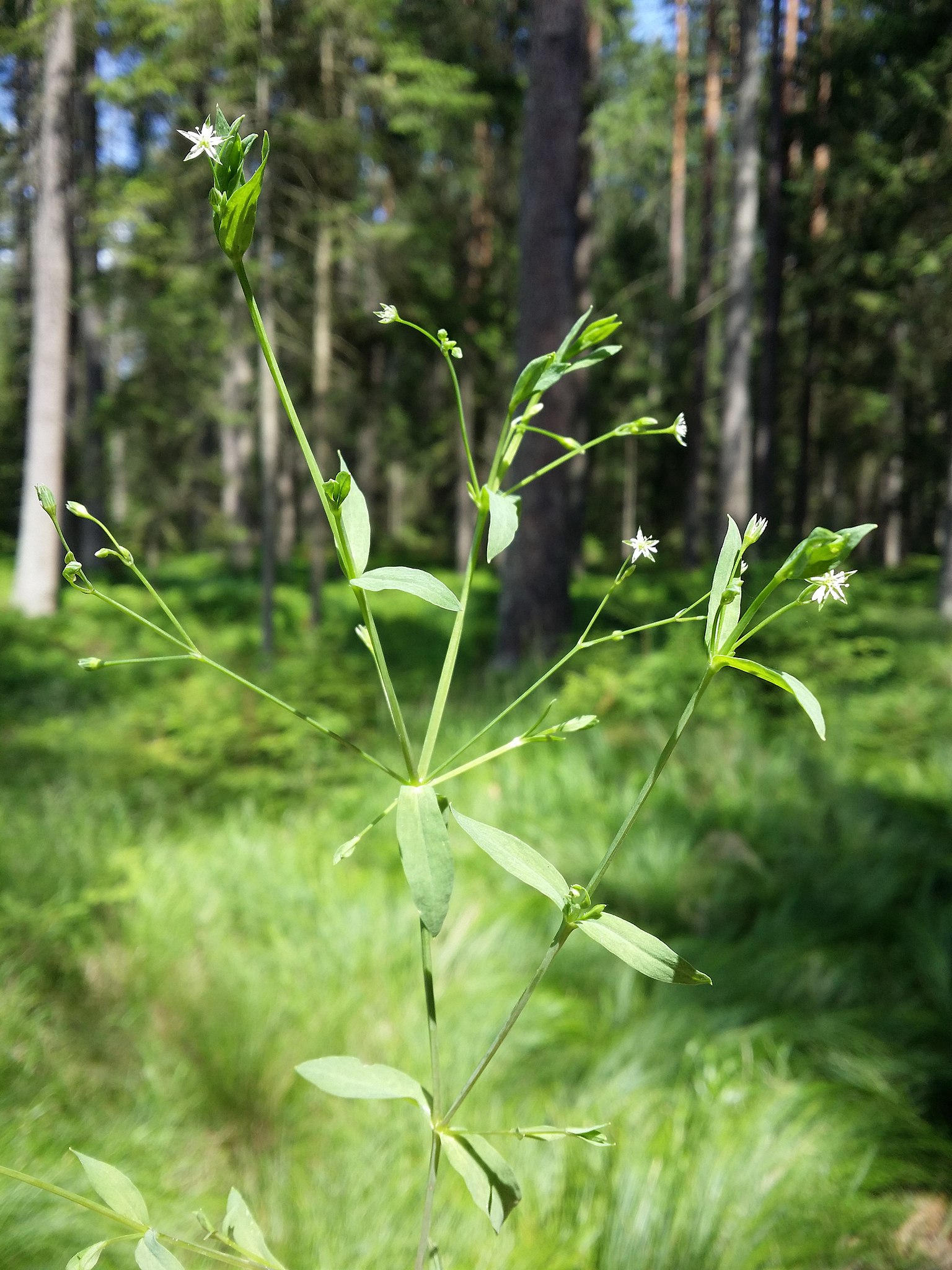
"Stellaria alsine sl17" by Stefan.lefnaer is licensend under CC BY-SA 4.0
Water blinks (Montia fontana)
Where?
Water blinks (Montia fontana) is a marsh plant found in streams, ditches, and wet fields worldwide. It thrives best in nutrient-poor soils.
Appearance?
Water blinks grows as an annual to perennial herbaceous plant and reaches growth heights up to 30cm, often found in mat-like stands. Stems grow decumbent to erect and sometimes float in water. Foliage leaves grow opposite in lanceolate shape with length from 3 to 20mm. In the flowering period from June to August, racemose inflorescences with up to eight flowers are formed. The flowers are radially symmetrical, with white petals and up to 3 mm in diameter
Special features?
The capsule fruits are self-propagating by rolling up the three fruit flaps and then catapulting the seeds out to a distance of 2 meters and a height of 0.6 meters.
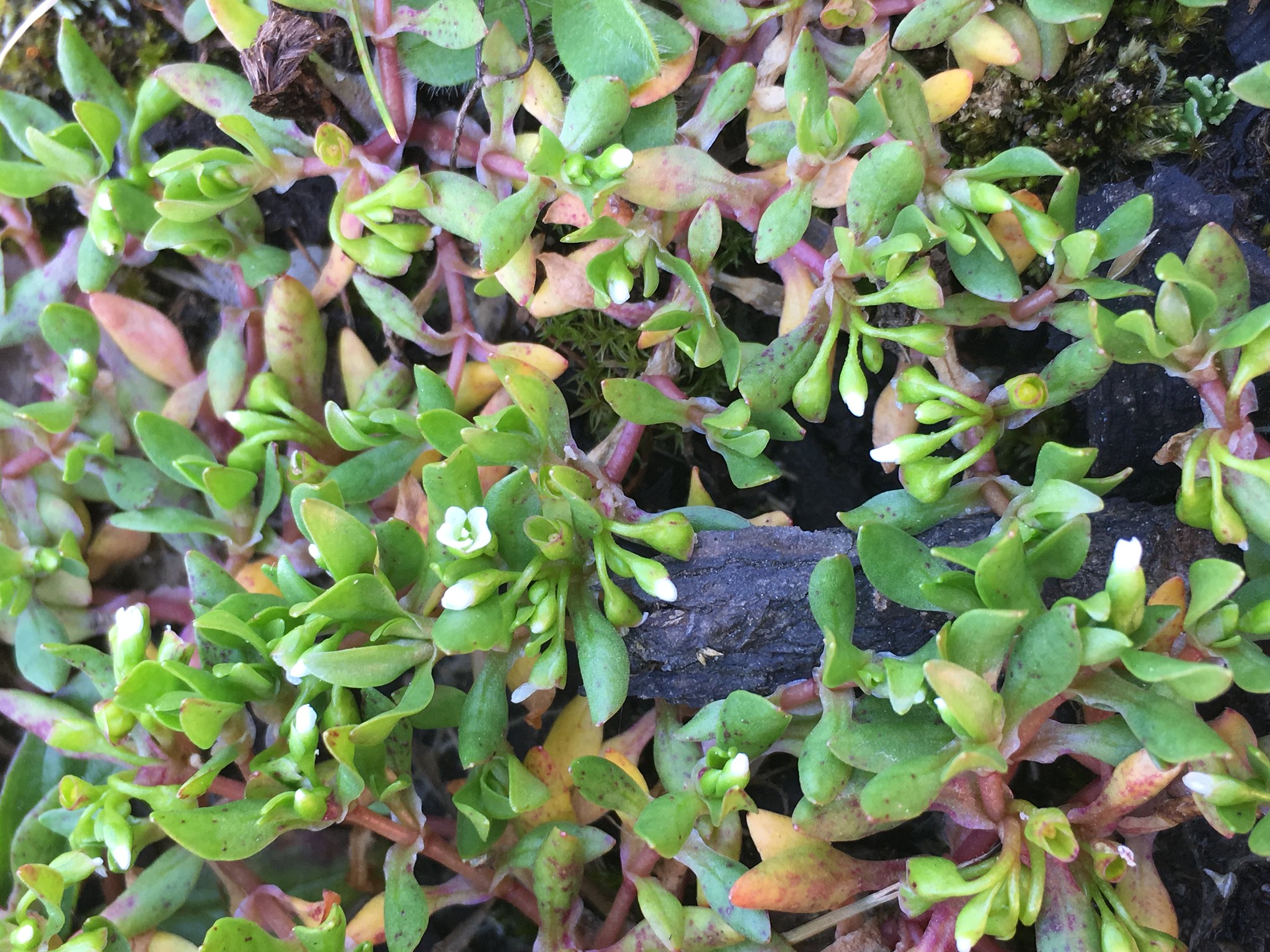
"Blinks (Montia fontana)" by --Tico-- is licensed under CC BY-NC-ND 2.0
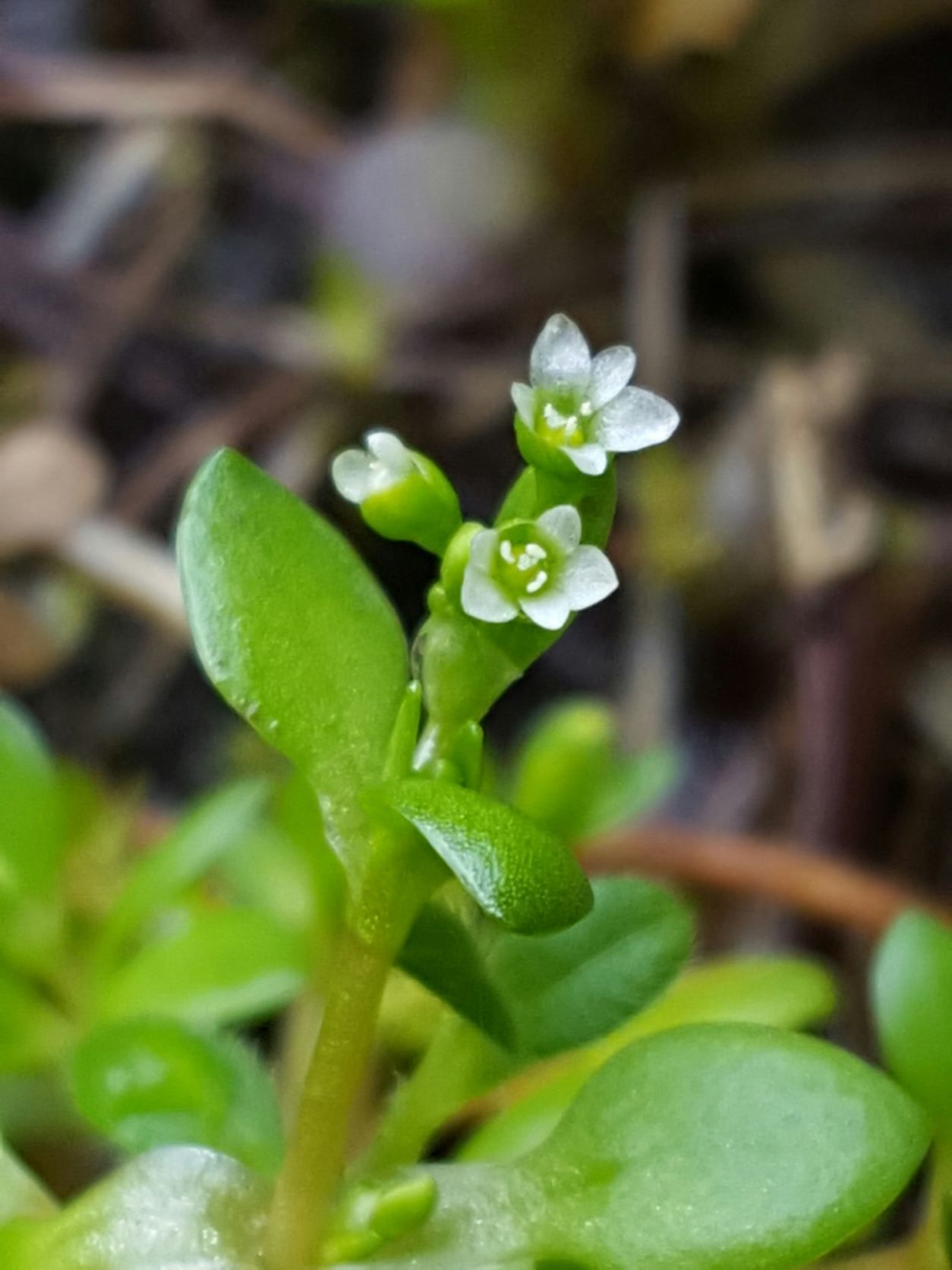
"6814123" by Alex Abair is licensed under CC BY-NC 4.0
Stonewort (Charophyceae)
Where?
Stoneworts require clean, nutrient-poor and calcareous water. They are found in both standing and flowing waters.
Appearance?
Stoneworts (Charophyceae) are a form-rich class of green algae with over 70 different species. Chara vulgaris & Nitella flexilis are the most represented. They form shoots up to 60 cm long with numerous side shoots up to 1 mm thick, on which pinnate branches of 5 or 7 are in whorls. Particular are the unbarked terminal limbs of the branches and the brown/grey and orange reproductive cells below the whorls.
Special features?
Stoneworts can colonize freshly formed water bodies and water accumulations as a pioneer plant. When removed from the water, the alga often develops a specific odor, which is said to resemble mustard oil.
.jpg)
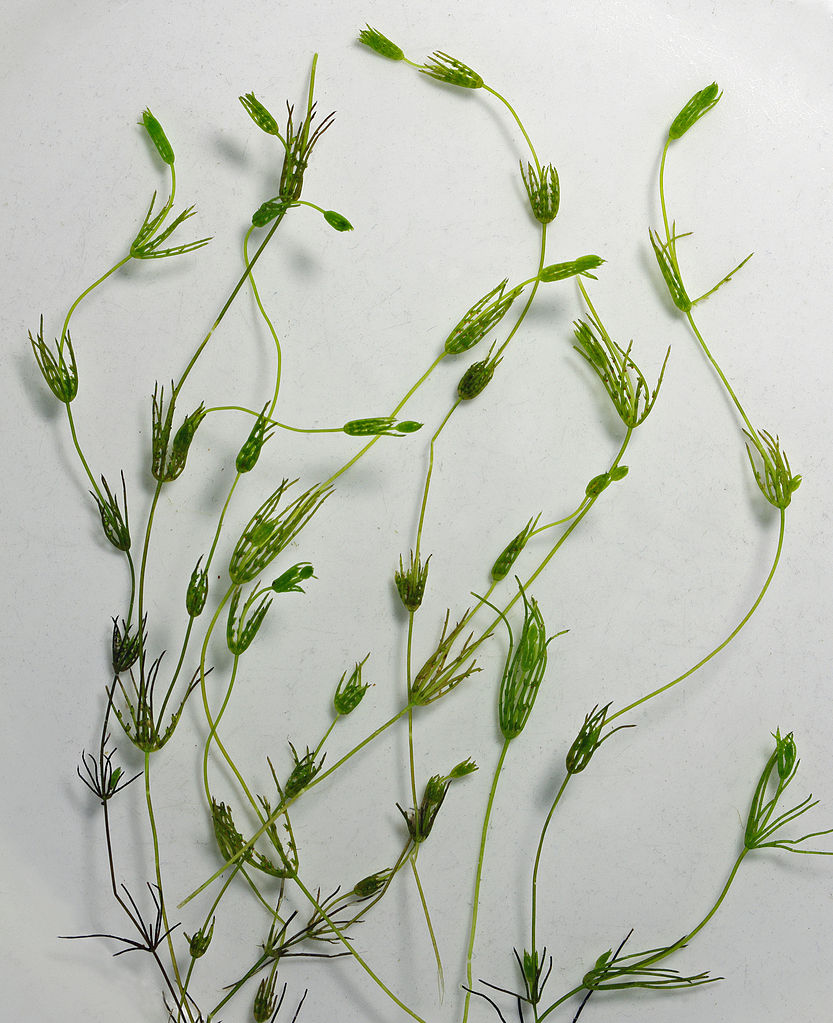
"CharaGlobularis" by Christian Fischer is licensed under CC BY-SA 3.0
Jerusalem artichoke (Helianthus tuberosus)
Distribution in Luxembourg / Action Plan: https://neobiota.lu/helianthus-tuberosus/
Invasive?
Helianthus tuberosus is native to central and eastern North America. Probably cultivation for eating the root tubers brought him to Europe. Under Western European climatic conditions, the plant does not produce viable seeds and reproduces vegetatively. Tubers and root pieces (rhizomes) are transported by rodents and running water, especially during winter floods. The plant can form dense and persistent monocultures along rivers, where it usually displaces native species by shading and competing for other resources..
Where?
Helianthus tuberosus, prefers light-rich, sandy, moist and nutrient-rich soils. It thrives best in locations that are repeatedly flooded by high water (riverbanks), but can also be found in ruderal areas and in agriculture.
Appearance?
The plant grows up to 3 m high, the stem is round and rough hairy. The stalked leaves are broad-lanceolate, with serrated margins, rough on top and finely soft-hairy underneath. They grow up to 25 cm long and 10 cm wide and are opposite in the lower part of the stem, alternate above. The yellow flowers are erect and 4 to 8 cm in diameter. Tongue and tube flowers are yellow. The plant blooms from September to October.
Distribution in Luxembourg / Action Plan: https://neobiota.lu/helianthus-tuberosus/
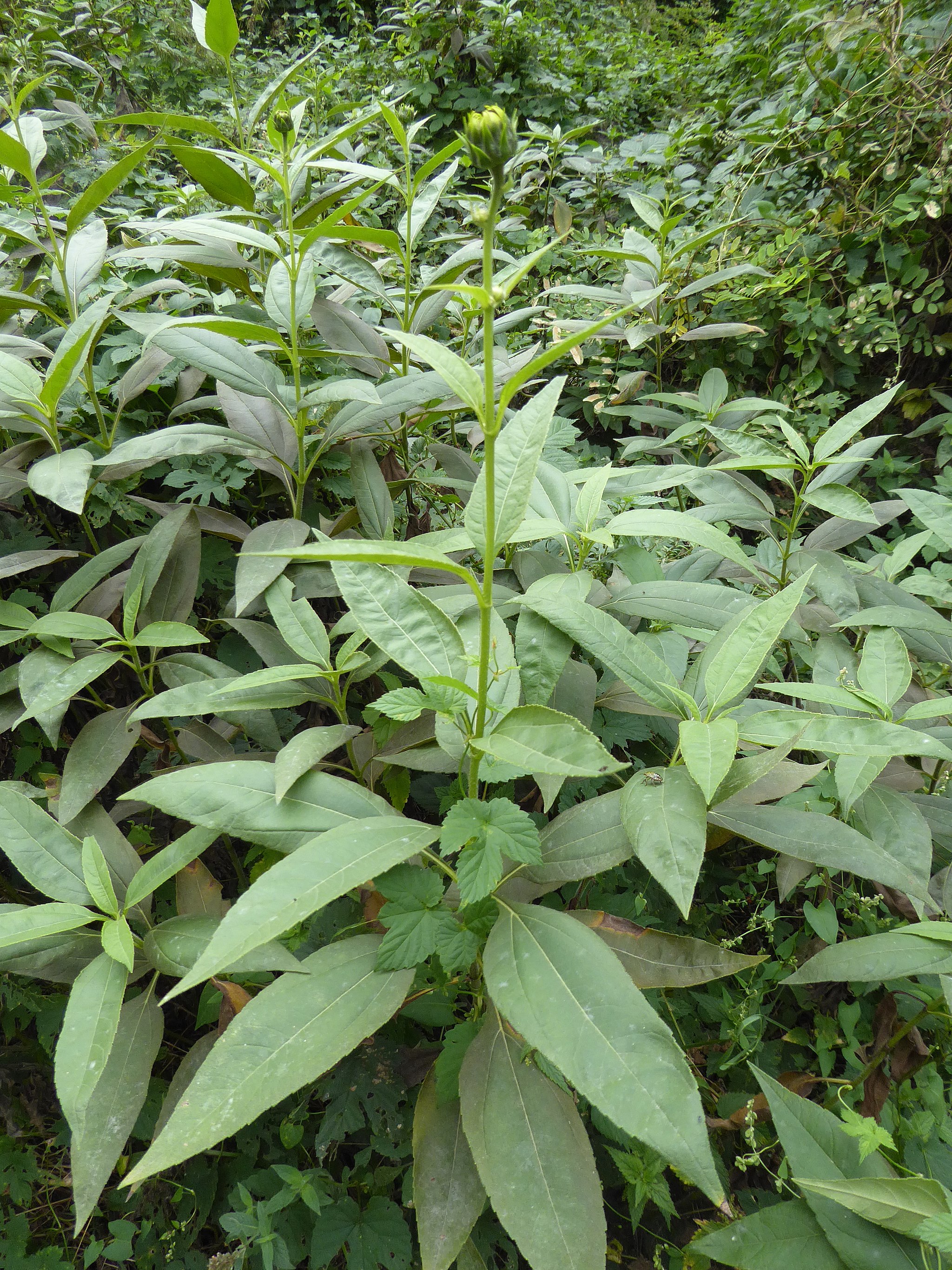
Jerusalem artichoke habitus
"File:Helianthus tuberosus Paludi 02.jpg" by Syrio is licensed under CC BY-SA 4.0.
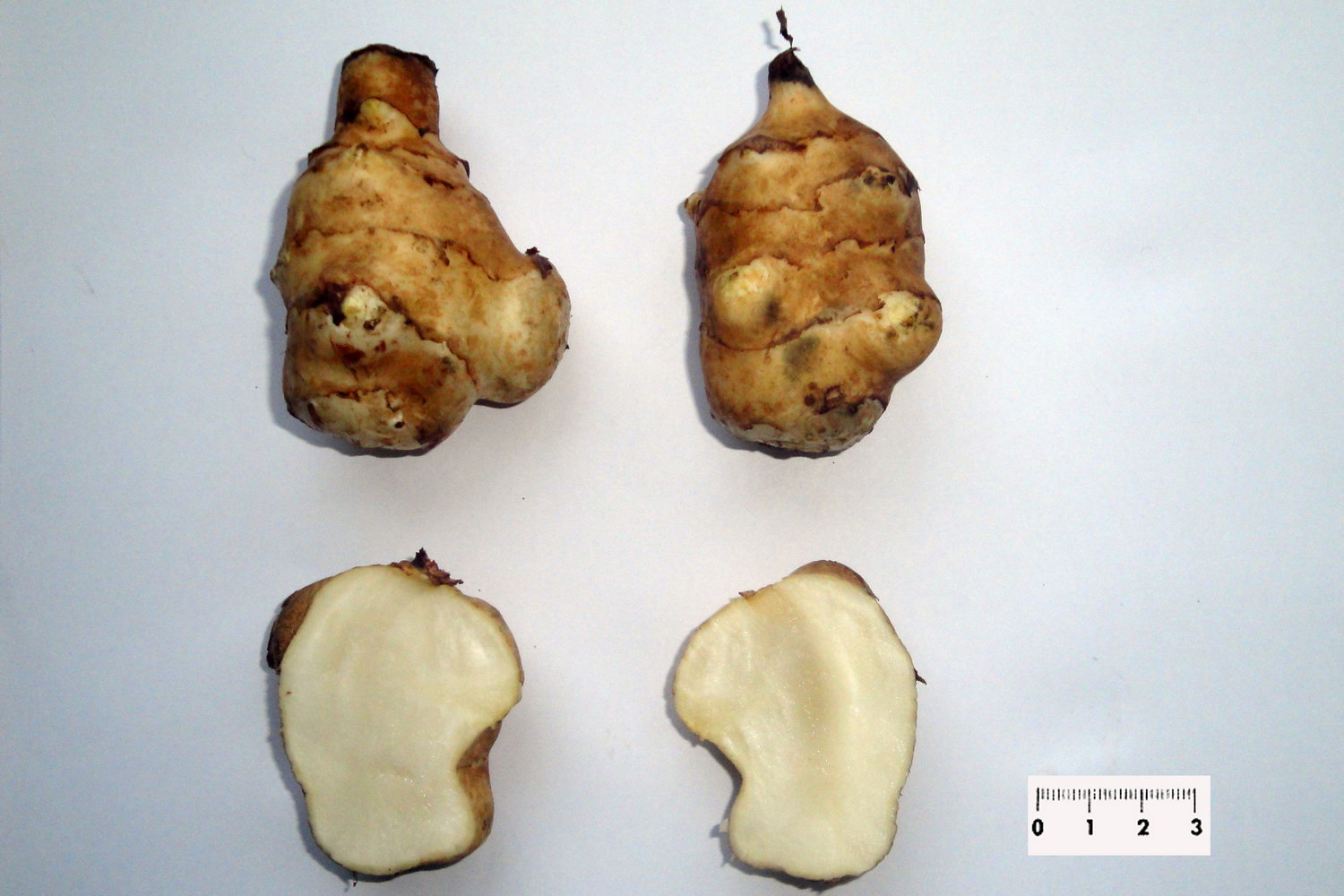
Edible root tubers of Jerusalem artichoke
"Helianthus tuberosus 'White Round', Tsaghkadzor, in culture" by Vahe Martirosyan is licensed under CC BY 2.0.
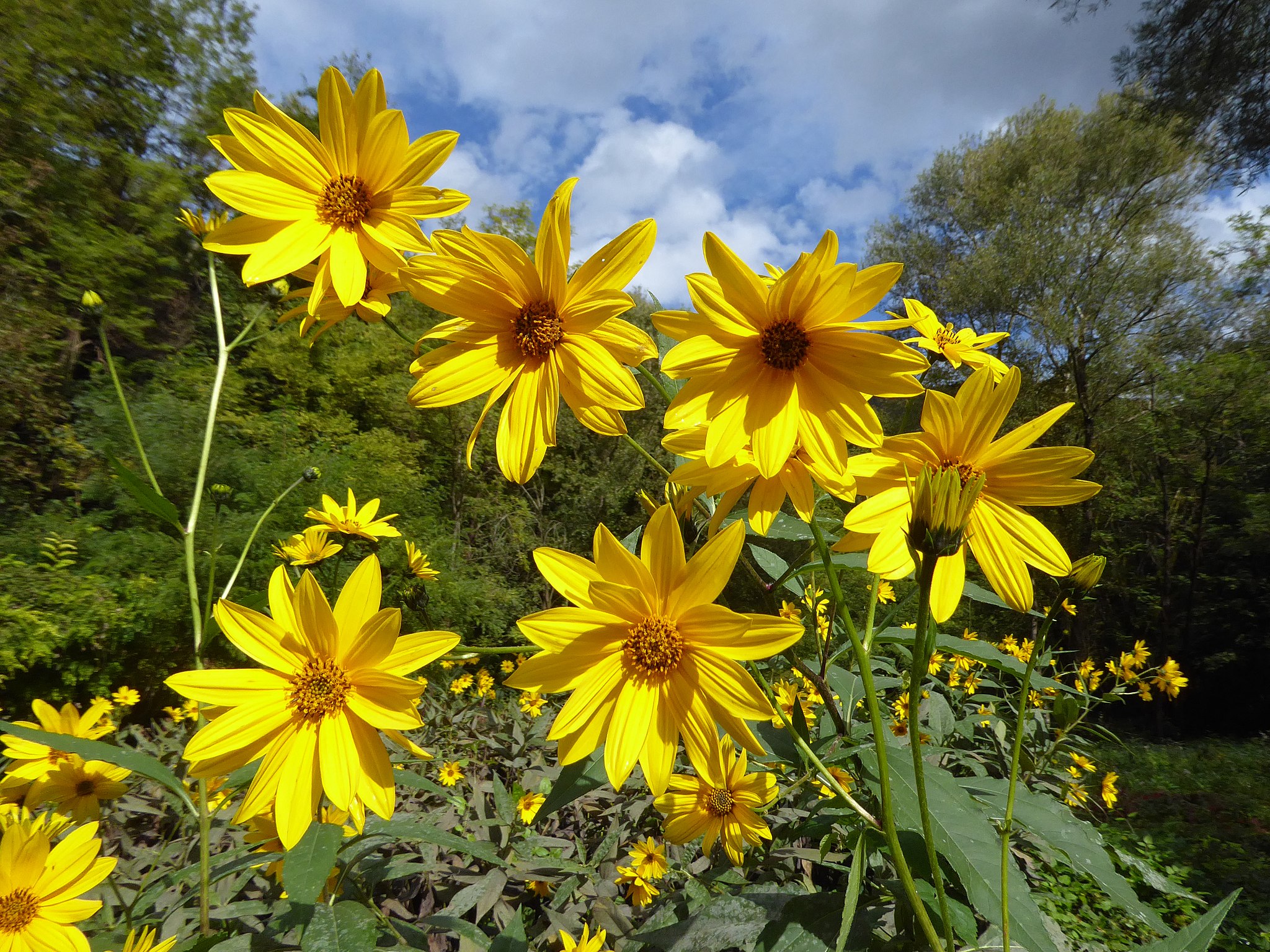
Jerusalem artichoke flowers
"Helianthus tuberosus Paludi 06" by Syrio is licensed under CC BY-SA 4.0.
western waterweed (Elodea nuttalli)
Invasive?
This perennial submerged plant forms dense populations that often colonize entire water bodies, restricting water movement, blocking light, creating anoxic conditions, and accelerating sediment deposition. Because of its rapid nutrient uptake and very high growth rate, the species displaces native aquatic plants.
The species' original range in North America extends from Quebec through Montana to Washington, and south to North Carolina and California. Spread is by vegetative propagation: shoot parts are transported widely by flowing water, marine traffic, water sports equipment (including fishing), and waterfowl. A new waterweed population grows from the shoot fragments.
Where?
Elodea nuttallii is an underwater plant that grows in various types of freshwater habitats, from stagnant to slow-flowing waters. It is very tolerant of water pollution and prefers warm, eutrophic and calcareous waters. It is often found in species-poor aquatic plant communities. It is more nutrient tolerant than its sister species Elodea canadiensis and can even survive in wastewater with concentrations up to 27.2 mg NH4+-N/l. Thus, it benefits more from water pollution than E. canadensis. Elodea nuttallii can form dominant stands in nutrient-rich, stagnant or slow-flowing waters. In hypertrophic waters, dominance stands of narrowleaf waterweed can occur especially after nutrient levels are reduced.
Appearance?
In addition to the Canadian pondweed (E. canadensis) and the Western waterweed, the Argentine waterweed (E. callitrichoides; with flat, longer leaves) is also found in our area, but all species are quite difficult to distinguish. Waterweed species are perennial submerged aquatic plants. Their densely leafy shoots creep or grow erect. They are about 1 mm thick and up to 300 cm long. The light green narrow leaves of this species are 3-cornered to linear, long-pointed, up to 10 mm long and 0.4 - 1.5 (-2.4) mm wide. In the lower stem area they are alternately arranged, in the upper area they are in mostly 3-fold whorls. In contrast to the Canadian pondweed (E. canadensis), the leaves of the Western waterweed are narrower, long-pointed, recurved and more or less strongly spirally twisted.
Distribution in Luxembourg: https://neobiota.lu/elodea-nuttallii/
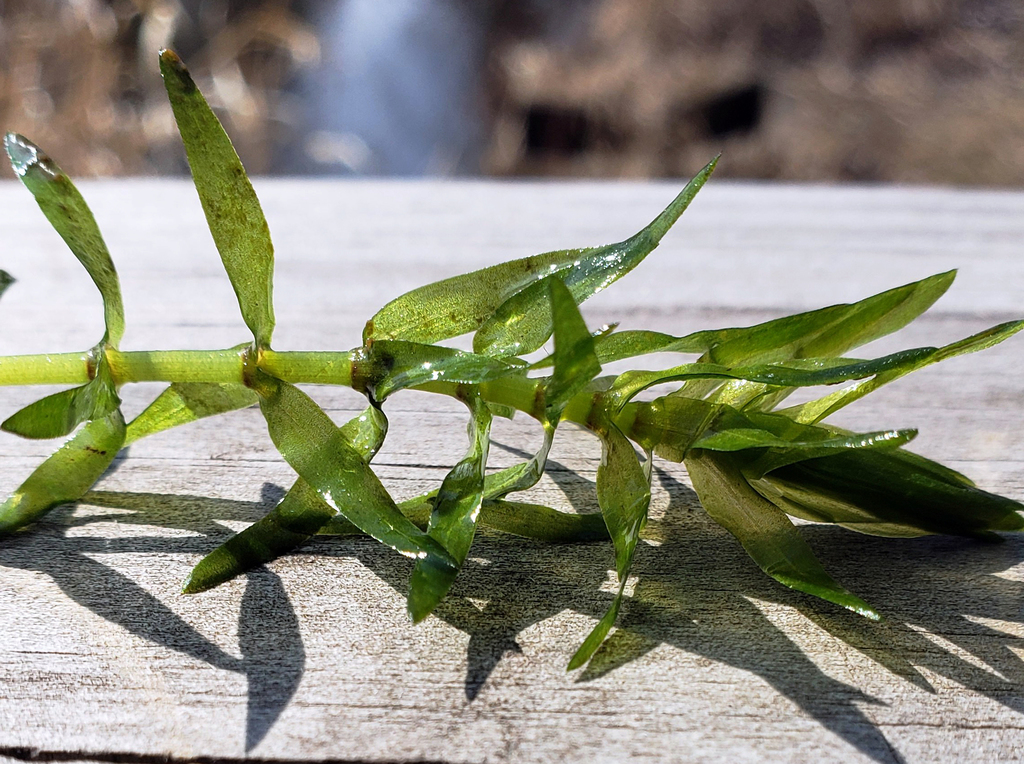
Linear, long pointed light green leaves of narrow-leaved waterweed.
"Elodea nuttallii" by aarongunnar is licensed under CC BY 4.0.
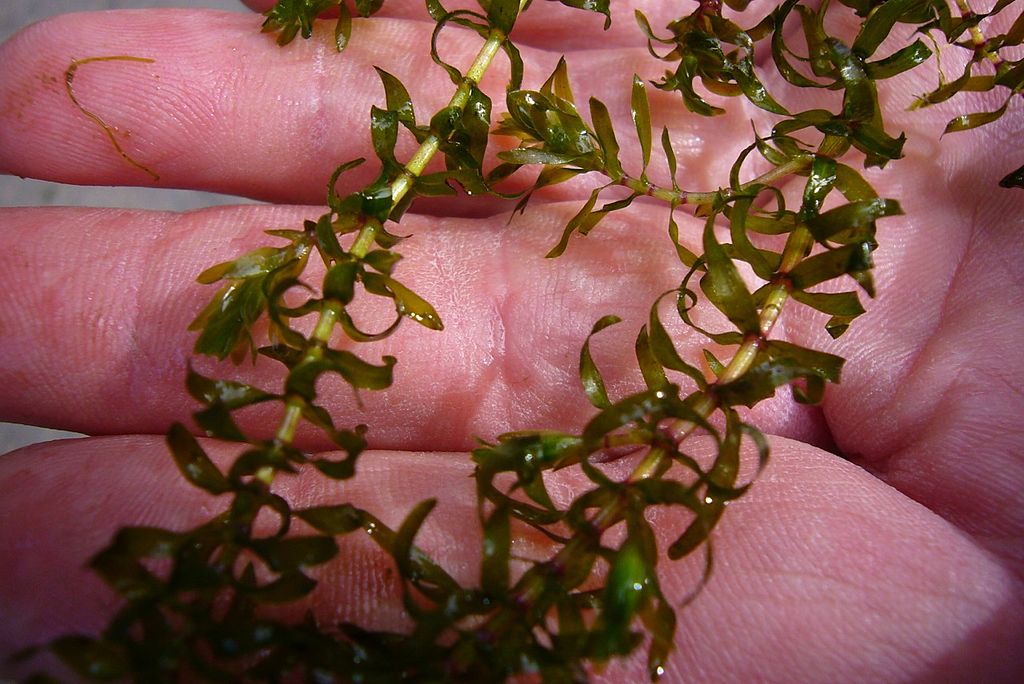
A slight spiral twist can be seen on some leaves, this distinguishes E. nutallii from E.canadensis.
"File:Elodea nuttallii* (8405291256).jpg" by Radio Tonreg from Vienna, Austria is licensed under CC BY 2.0.
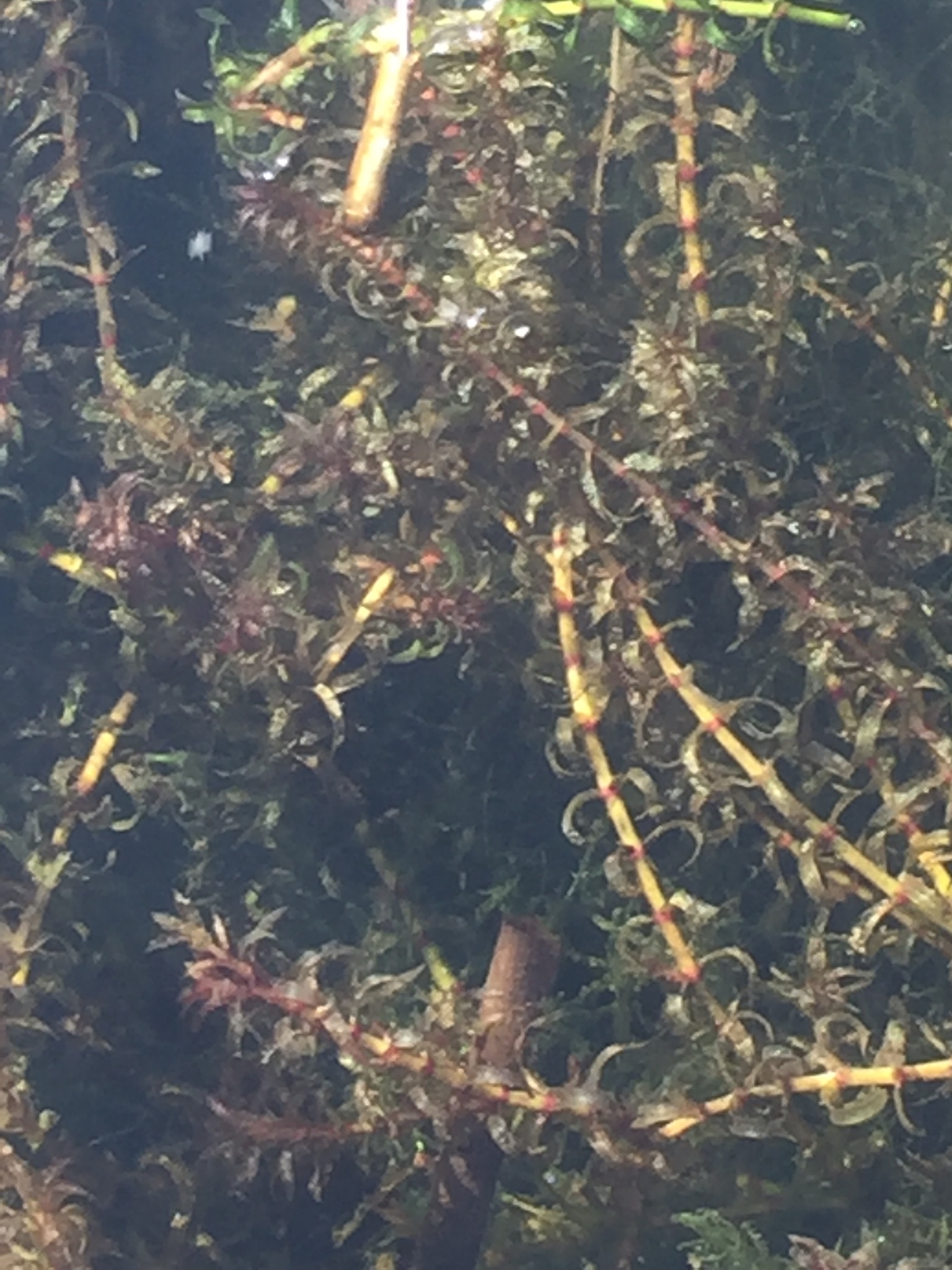
Dense dominant stands of the
Narrow-leaved waterweed.
"Elodea nuttallii" by ahospers is licensed under CC BY 4.0
This website uses no external trackers, no analytics, just session cookies and values your online privacy.

